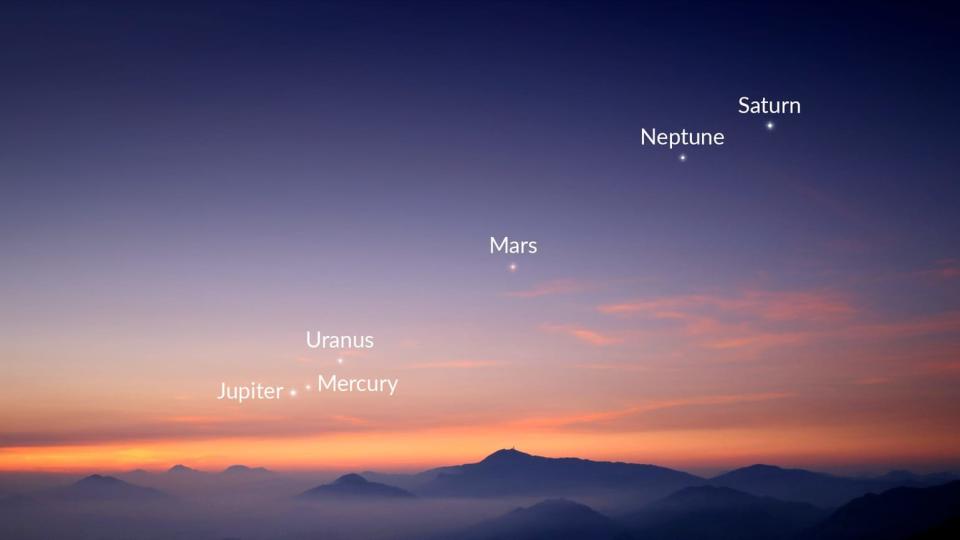Fire up those telescopes, the parade of planets is coming
After a year of celestial events like the solar total eclipse and the appearance of the Northern lights, a parade of planets is preparing to put on a show.
On June 3, stargazers will have the opportunity to view, left to right, Jupiter, Mercury, Uranus, Mars, Neptune and Saturn, as they appear to form a planetary alignment in the east and southeast night sky.

While the naked eye may see Mercury, Mars, Jupiter and Saturn, viewers will need a telescope or high-powered binoculars to see Uranus and Neptune, according to Science Alert.
From the perspective of those on Earth, the alignment will be a visual phenomenon as the planets appear to line up as they travel their orbital paths around the sun, astronomers say.
To see the planetary alignment, viewers should start looking skyward about 20 minutes before sunrise when all six planets will be most visible.
To observe the planetary alignment on June 3, start looking toward the sky about 20 minutes before sunrise, as this is when all six planets will be most visible, according to Star Walk.
Space.com officials cautioned stargazers to keep their expectations in check when viewing the alignment.
Mercury and Jupiter may be difficult to see because they will appear low near the horizon and will rise only about a half hour before sunup, Space.com officials stated.
“So, unless you have a nice flat horizon, with no obstructions (like distant buildings or trees) you can probably forget making a sighting of the solar system's smallest planet (Mercury) next to the largest planet (Jupiter),” Space.com stated.
If you step outside at around 3:30 or 4 a.m. on Monday, don't expect to be awed by the sight of a planet parade.
What you will likely see is a crescent moon and a bright orange Mars shining to its right, and farther off to the right will be another relatively bright "star," Saturn, glowing with a yellowish-white hue.
Bigger show this winter
Space.com officials suggest that those who want to see a more eye-catching planet line-up should wait until next year when four bright planets plus a waxing crescent moon will appear in the early evening sky on Jan. 31, 2025.
During that time, viewers will be able to catch the moon sitting to the lower right of Saturn and on the following night the moon will have moved to the lower left of dazzling Venus.
Meanwhile, high in the southeast, Jupiter will glow with a brilliant silvery light among the stars of Taurus the Bull, accompanied by the beautiful open star clusters of the Hyades and Pleiades.
Additionally, well up in the eastern sky, and forming a conspicuous triangle with the bright stars Pollux and Castor of Gemini, the Twins, will be amber-colored Mars, appearing more than six times brighter than it appears to us now.
Daily Press reporter Rene Ray De La Cruz may be reached at RDeLaCruz@VVDailyPress.com. Follow him on X @DP_ReneDeLaCruz
This article originally appeared on Victorville Daily Press: Fire up those telescopes, the parade of planets is coming

